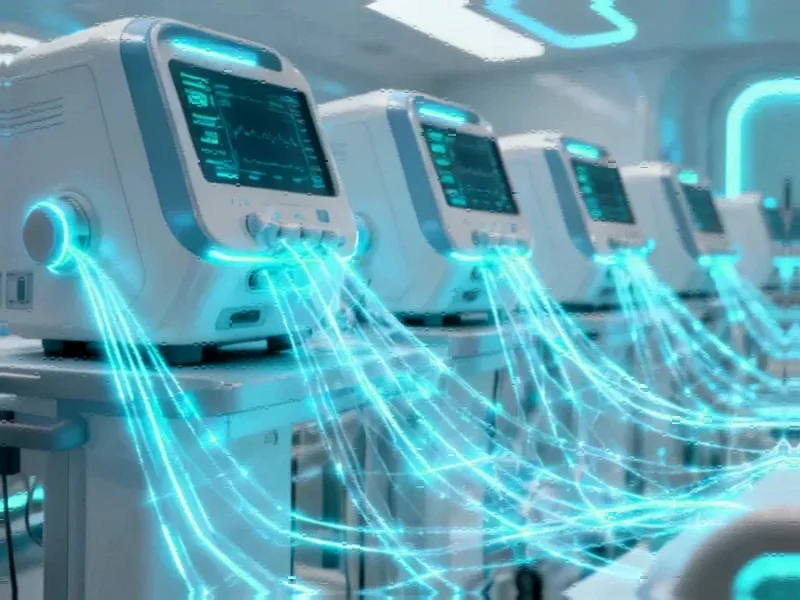According to TheRegister.com, NHS hospitals are being blocked from upgrading to Windows 11 because medical device suppliers haven’t made their equipment compatible with Microsoft’s latest operating system. The Rotherham NHS Foundation Trust was quoted £25,000 to upgrade a single three-year-old device, while director of health informatics James Rawlinson revealed that while 98% of their Microsoft estate has been upgraded, 2% remains stranded on older software. This comes after Microsoft officially ended support for Windows 10 on October 14, 2025, leaving devices without critical security patches despite NHS England’s directive to upgrade for patient data protection. Rawlinson described quarantining outdated devices as “worrisome” and criticized suppliers for suddenly abandoning end-to-end support responsibilities. This situation raises critical questions about healthcare technology infrastructure.
Table of Contents
The Medical Device Vendor Lock-In Crisis
The NHS faces what industry experts call “medical device vendor lock-in” – a situation where healthcare providers become dependent on specific manufacturers for software updates and compatibility. Unlike standard IT equipment, medical devices like pacemaker programmers, diagnostic imaging systems, and laboratory analyzers require regulatory approval for any software changes. Manufacturers exploit this regulatory framework to create artificial upgrade cycles, effectively holding hospitals hostage. The £25,000 quote for a three-year-old device represents a staggering markup that has little to do with actual development costs and everything to do with monopoly positioning. This problem extends beyond the NHS to healthcare systems worldwide, where medical device manufacturers have created a captive market with limited competition and excessive pricing power.
Critical Cybersecurity Implications for Patient Safety
The cybersecurity implications here are particularly alarming given healthcare’s recent history. The 2017 WannaCry attack that cost the NHS £92 million demonstrated exactly what happens when healthcare systems run outdated software. Now, with Windows 10 end of support creating new vulnerabilities, the stakes are even higher. Medical devices connected to hospital networks become potential entry points for ransomware attacks that could compromise not just data but patient care directly. The recent Synnovis attack that resulted in appointment cancellations and was linked to a patient death shows how quickly cybersecurity failures translate to clinical consequences. When devices like pacemaker programmers or cardiology systems can’t communicate due to quarantine measures, patient care suffers immediately – creating an impossible choice between security and treatment continuity.
Systemic Regulatory and Procurement Failures
This situation reveals fundamental flaws in healthcare technology procurement and regulation. The NHS and similar healthcare systems worldwide typically purchase medical devices through multi-year contracts that don’t adequately address software lifecycle management. Manufacturers have little incentive to provide free or affordable Windows 11 compatibility updates when they can instead sell entirely new systems. Regulatory agencies like the MHRA in the UK focus primarily on device safety and efficacy rather than long-term software maintenance requirements. There’s also a critical disconnect between the rapid pace of consumer technology evolution and the glacial speed of medical device certification processes. By the time a medical device receives regulatory approval for a new operating system, that OS may already be approaching its own end-of-life, creating a perpetual catch-up scenario.
Broader Healthcare Technology Industry Impact
This standoff reflects a growing tension between traditional medical device manufacturers and healthcare systems’ digital transformation efforts. As hospitals increasingly adopt unified IT platforms and cloud-based systems, proprietary medical devices that can’t integrate become obstacles to modernization. The manufacturers’ strategy of abandoning support responsibilities while pushing expensive hardware replacements threatens to undermine trust across the healthcare technology ecosystem. This could accelerate the shift toward more open architecture medical devices and increased pressure for regulatory intervention. The situation also highlights why many healthcare systems are exploring virtualization and containerization strategies that could isolate medical device software from underlying operating system dependencies, though these approaches bring their own compliance challenges.
Potential Solutions and Industry Evolution
Resolving this crisis requires coordinated action across multiple fronts. Healthcare providers need to implement stronger contract language requiring long-term software support and reasonable upgrade pricing. Regulatory bodies must establish clearer guidelines for medical device software maintenance throughout product lifecycles. The industry may see increased pressure for modular medical device architectures where the clinical components remain stable while the computing platform can be updated separately. There’s also growing interest in open-source medical device platforms that could break the vendor lock-in cycle. Meanwhile, interim solutions like network segmentation and quarantine protocols provide necessary stopgaps but don’t address the underlying economic and regulatory dysfunctions. The coming years will likely see significant industry consolidation and new entrants offering more flexible approaches to medical device software management.



